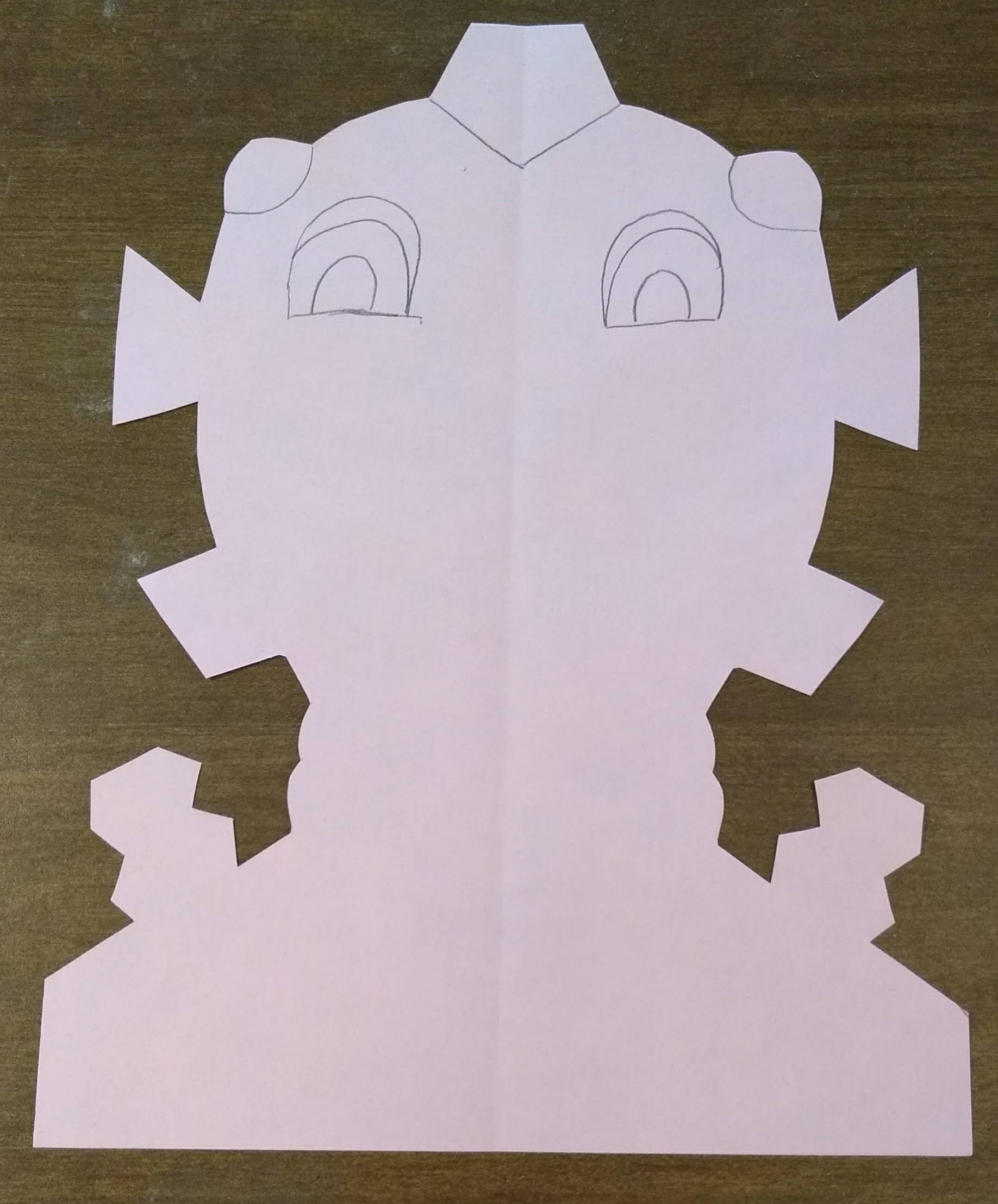So in trying to establish more simple art lessons, I have recently devised a symmetrical robot activity. Robots do not have to be symmetrical. But for our purposes, we are connecting symmetry, robots, shapes and design to develop a symmetrical robot. Let the science fiction of robots enter your classroom with this symmetrical robot head lesson.

Just it’s head?
When devising the lesson, questions occur. Will students want to make just the head? Then students may develop it into a mask. Originally that was the concept plan. But if they develop the entire robot, then it may become a paper doll craft. In addition, which grade will enjoy the lesson? In the end the lesson was just the symmetrical robot head. With few supplies and steps, students will make symmetrical robots.


Folding Paper & Drawing
It is absolutely incredible how many students struggle with folding paper. After they fold it, they draw away and then back to the fold. Yet they struggle with that too. So an option is to pre-draw a line on one side of the fold in the paper. It could be a dotted or dash line as a guide. Or it could be a line that represents the edge of the robot. As a result, several copies could be made for students to choose from. In addition, a requirement would be to alter or change the outside edge by the student to be the student’s personal idea.

Cutting it out and more…
Alright, we are going to work with just the head for this blog post. Students keep the paper closed. Then they cut it out by following their defined line. They open it. And they go WOW! And OHHH!



Okay! Now it is successfully cut out. Everyone is excited. It is time to put on those thinking caps. Yes, I said thinking caps. Remember the days when teachers said things like that?
Let the science fiction of robots enter your classroom with this symmetry lesson.
Coupled with examples and models, students need to draw or collage the same things on both sides. Since the concept is symmetry, students align shapes, lines, colors on both sides of the line of symmetry to personalize the robot.
Now, these robots do resemble people. So they need faces. However, they could have many eyes or one eye. They may have specific buttons, marks, or designs that are the same on both sides. In addition, facial expressions are an extra idea.



All the extras…
The super excitement comes when you get to see how the children draw the details. Above are several ideas. But it really depends on what grade level you will teach this lesson with. Younger students could have difficulty coming up with variety. Or they could go overboard and draw lots of tight small shapes, which leads to struggles with coloring. Older students will have more ability to define spacing and design.
Supplies
As noted through the images, it depends on you and what you have available for your children. Crayons, pencil, scissors, and computer printer paper will work just fine. However if you have markers, collage elements like special papers, glue, and more available then by all means give them a try.
Making a Mask…
Of course if your science fiction lovers of robots wish to make the symmetrical robot head into a mask, then have them cut the eyes out. They could just fold a small section on the middle of the eye and cut a slit to fit the scissors inside to cut around and out the eyes. Next you devise a method for the child to attach or hold it to their face. This could be pipe cleaners on each side stapled or taped. A piece of yard/string to tie it in place. Or tape a tree stick or tongue depressor to the side of the mask on the opposite of the detailed artwork.
Closure
Usually it is great critical thinking to have children explain how their Symmetrical robot will benefit society. Sometimes listing characters from books and media helps to guide this thinking. Data from Star Trek the Next Generation demonstrates how humans and the character struggle with his existences.
“I would gladly risk feeling bad at times, if it also meant that I could taste my dessert.”


